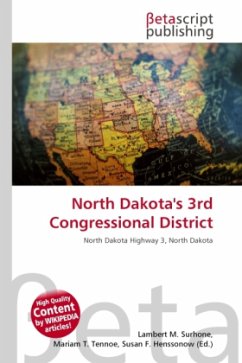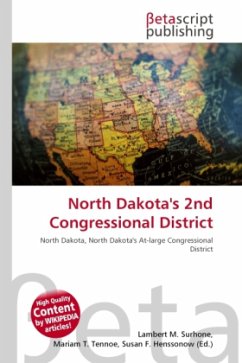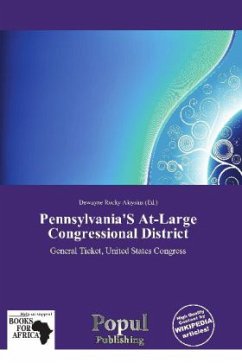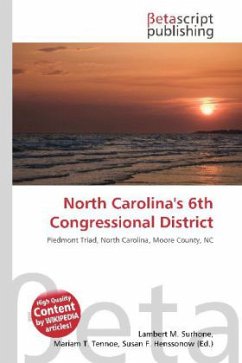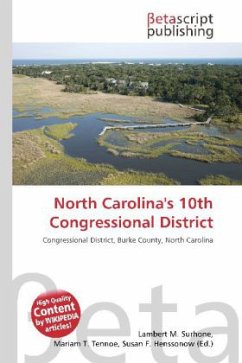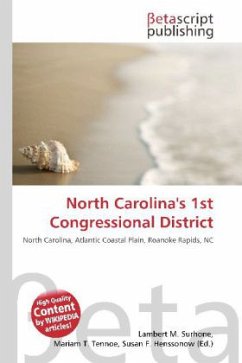
North Dakota's At-large Congressional District
Versandkostenfrei!
Versandfertig in 6-10 Tagen
30,99 €
inkl. MwSt.

PAYBACK Punkte
15 °P sammeln!
High Quality Content by WIKIPEDIA articles! The district was first created when North Dakota achieved statehood on November 2, 1889, electing a single member. Following the 1900 census the state was allocated two Representatives who were both elected from the at large district, but when the 1910 census allocated a third the State drew three single-member districts. After the 1930 census eliminated the third district, North Dakota returned to electing two members from an at-large district until 1962 when two single member districts were drawn. Since the reapportioning of Congressional seats in ...
High Quality Content by WIKIPEDIA articles! The district was first created when North Dakota achieved statehood on November 2, 1889, electing a single member. Following the 1900 census the state was allocated two Representatives who were both elected from the at large district, but when the 1910 census allocated a third the State drew three single-member districts. After the 1930 census eliminated the third district, North Dakota returned to electing two members from an at-large district until 1962 when two single member districts were drawn. Since the reapportioning of Congressional seats in 1973 following the 1970 census, North Dakota has had only a single Representative. At the 1972 election, this meant that the two North Dakota congressional districts were merged into one, and Mark Andrews (Republican incumbent in the 1st Congressional District) won the newly-merged district with 72.7% of the vote. Arthur A. Link, Democratic incumbent in the 2nd congressional district, did not run for re-election, but was successful in winning election as the State's Governor.



